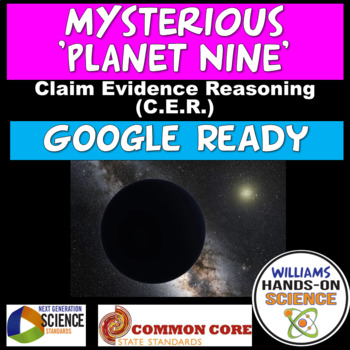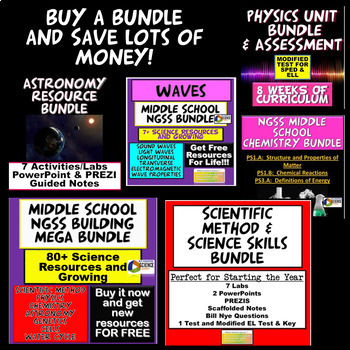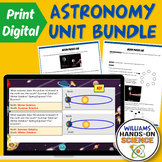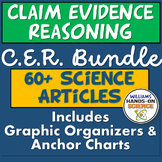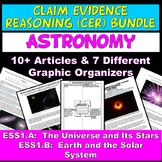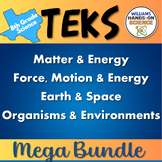Solar System NGSS Claim Evidence Reasoning Mysterious Planet Nine Digital
- Zip
Also included in
- These activities aren’t just you’re ordinary everyday fill in the blank rote worksheets. These are student centered, challenging, hands-on, engaging activities that will wow and motivate even some of the most reluctant learners. I’ve taught, tweaked and improved these products since 2000. I bundledPrice $47.00Original Price $84.00Save $37.00
- This resource is packed with easy to use, easy to grade, no prep, scientific current events, using the NGSS Science and Engineering practice of Engaging in Argument from Evidence. Students learn about a variety of science topics through a C.E.R. (Claim Evidence Reasoning) graphic organizers. This isPrice $47.00Original Price $91.75Save $44.75
- Students learn about various current events and discoveries in Astronomy through a C.E.R. (Claim Evidence Reasoning) graphic organizer. This is great for getting your students to explain phenomena in a meaningful way and it allows you as the instructor to adequately assess their understanding of conPrice $34.00Original Price $66.50Save $32.50
- The TEKS 8th Grade Bundle is a comprehensive resource for teaching science mainly in Texas, but it can be used in any state. This bundle includes over 60 hands-on, rigorous, engaging, and phenomena-driven lessons that cover the TEKS standards for 8th grade science. The lessons are designed to help sPrice $160.00Original Price $321.15Save $161.15
Description
Students learn about the possibility of a “Planet Nine” existing because of odd orbital irregularities of objects in our solar system through a C.E.R. (Claim Evidence Reasoning) graphic organizer. This is great for getting your students to explain phenomena in a meaningful way and it allows you as the instructor to adequately assess their understanding of concepts. The students figure out what the "Claim" is in the article, they then use data that supports the claim in the "Evidence" section, draw visual evidence and then explain why the evidence supports the claim in the "Reasoning" section.
You also get a generic template used for any current events that apply to your content. Any time I see an interesting article that applies to what we are learning this is my Go-To template!
This Resource is now Google Ready for Distance Learning!!!
You get the following:
-CER Graphic Organizer
-Article to print hard copies and web address for reading off of the computer
-Key
-CER Teacher Tips
The following concepts are included:
Astronomy
Solar System
Astronomical Units
Asteroids
Gravity
Orbit
Super-Earth planet
Neptune
Thank you for taking a look!
Please follow me on TpT for new products and check me out on Instagram for my products in action!
Williamshandsonscience Instagram
Related Products
⭐ Claim Evidence Reasoning (CER) North Korea Missile Launch
⭐ Claim Evidence Reasoning (CER) The Physics of Car Crashes
⭐ Claim Evidence Reasoning California Mudslides (Current Event and Sub Plan)
⭐ Claim Evidence Reasoning Plate Tectonics Pangaea Article and Graphic Organizer
⭐ Claim Evidence Reasoning: Government Report on Human Caused Climate Change

